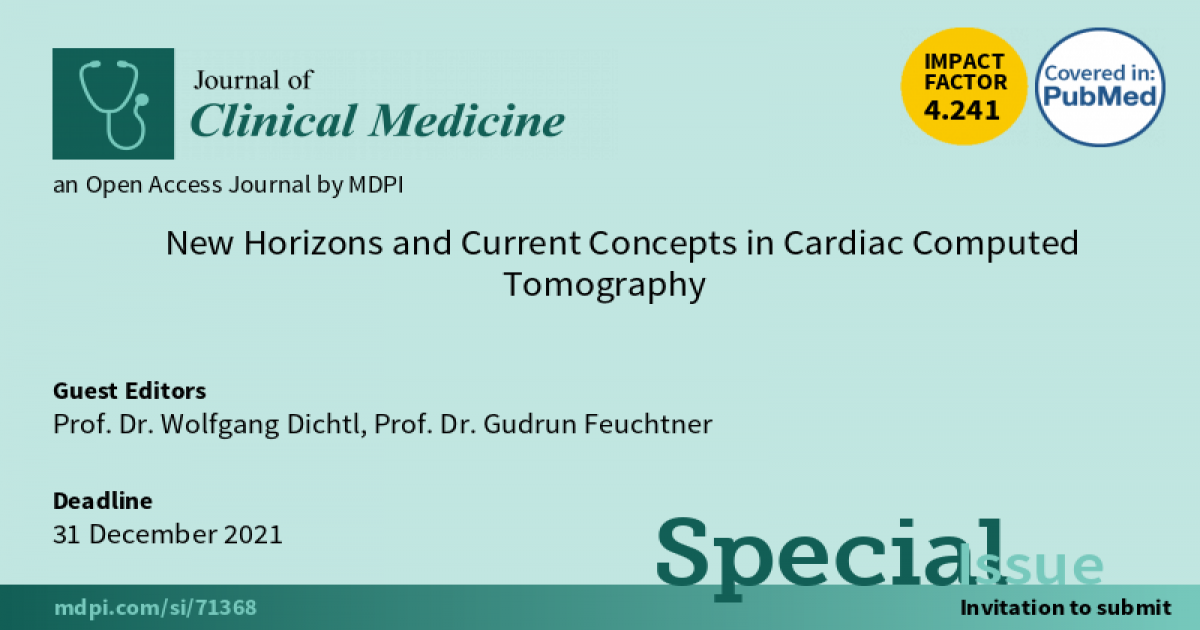New Horizons and Current Concepts in Cardiac Computed Tomography
A special issue of Journal of Clinical Medicine (ISSN 2077-0383). This special issue belongs to the section "Cardiology".
Deadline for manuscript submissions: closed (31 December 2021) | Viewed by 8450

Special Issue Editors
Interests: cardiac electrophysiology; takotsubo syndrome; cardiac computed tomography; sleep apnea
Interests: coronary CTA; coronary artery disease; computed tomography angiography
Special Issues, Collections and Topics in MDPI journals
Special Issue Information
Dear Colleagues,
Cardiac imaging has evolved rapidly over the past decades. Multi-slice computed tomography (CT) is now the preferred imaging modality for non-invasive diagnosis of coronary artery disease. Detection of high-risk coronary plaques allows for improved selection of patients at high risk for future major clinical events. Furthermore, other structures of the heart such as valve morphology, the amount of valvular calcification, and the characteristics of cardiac chambers including the left atrial appendage (size, wall thickness), epicardial fat, embolic sources (thrombus, endocarditis) and extra-cardiac vessels can be assessed. Cardiac CT plays a key role in guiding cardiovascular interventions such as transcatheter aortic valve implantation, pulmonary vein isolation, or left atrial appendage occlusion.
We are inviting original research articles and reviews (state-of-the-art and novel clinical applications) to be submitted until 31th December 2021.
Dr. Wolfgang Dichtl
Prof. Dr. Gudrun Feuchtner
Guest Editors
Manuscript Submission Information
Manuscripts should be submitted online at www.mdpi.com by registering and logging in to this website. Once you are registered, click here to go to the submission form. Manuscripts can be submitted until the deadline. All submissions that pass pre-check are peer-reviewed. Accepted papers will be published continuously in the journal (as soon as accepted) and will be listed together on the special issue website. Research articles, review articles as well as short communications are invited. For planned papers, a title and short abstract (about 100 words) can be sent to the Editorial Office for announcement on this website.
Submitted manuscripts should not have been published previously, nor be under consideration for publication elsewhere (except conference proceedings papers). All manuscripts are thoroughly refereed through a single-blind peer-review process. A guide for authors and other relevant information for submission of manuscripts is available on the Instructions for Authors page. Journal of Clinical Medicine is an international peer-reviewed open access semimonthly journal published by MDPI.
Please visit the Instructions for Authors page before submitting a manuscript. The Article Processing Charge (APC) for publication in this open access journal is 2600 CHF (Swiss Francs). Submitted papers should be well formatted and use good English. Authors may use MDPI's English editing service prior to publication or during author revisions.
Keywords
- structural heart disease
- cardiac imaging
- high-risk plaque
- atherosclerosis
- coronary artery disease
- valvular calcification
- thrombus detection







